Proper floor insulation is one of the important components of the repair, it depends on the floor how comfortable the temperature in your home will be. Therefore, if you decide to carry out work without calling specialists, you will need to carefully read the instructions, photos and video materials. The article will tell you how to insulate the floor in a wooden house, why it is desirable to do it from below, and whether it is possible to insulate without opening the floor.
Content
What material is better for floor insulation?
Construction stores today offer a huge selection of insulation materials. Each of them has its pros and cons. The difference lies not only in cost and in the installation process, but also in operational conditions.
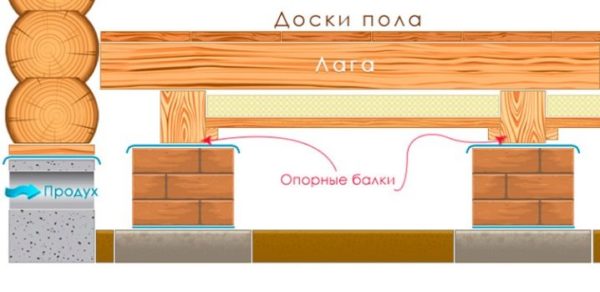
To warm the floors below, are usually used:
- ecowool;
- mineral wool;
- sawdust;
- expanded clay;
- penoplex;
- Styrofoam.
The choice depends primarily on the wallet of the owner, the quality of the flooring and the individual characteristics of the structure.
Penoplex insulation
Penoplex is a foam polymer that is particularly durable and holds its shape perfectly. In its manufacture, manufacturers use the extrusion method, which gives a material that retains a solid structure, which retains heat transfer due to many small cells. Penoplex does not need waterproofing, since water does not penetrate inside it. Therefore, they are mainly insulated with floors in frame houses on stilts.

Mineral wool
This is one of the commonly used materials. Mineral wool has a sufficient number of advantages:
- light weight;
- fire resistant;
- high degree of sound insulation.
There are three types of material on sale that differ in composition:
- glass;
- slag;
- stone.
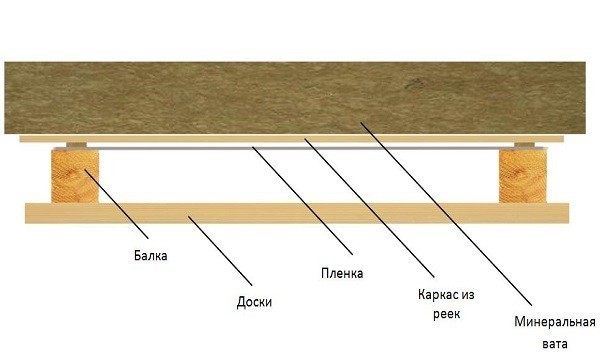
To warm the floors below in a wooden house, you can use rolled mineral wool. It goes on sale in the form of dense plates or a flexible mat twisted into a roll. To make it convenient to correctly position it during installation, the plates are marked.
This material has a significant minus - it absorbs moisture, therefore, during its installation it is necessary to make additional vapor barrier, which will significantly increase the life of mineral wool.
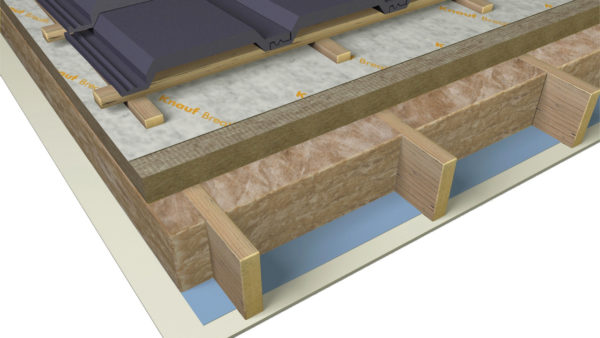
During the laying of plates it is required to wear special clothes and glasses, since the fibers and dust that are separated from it can cause itching, irritation and other inconveniences.
Expanded clay as an insulating material
What is expanded clay? These are small pebbles made of clay or slate, porous in structure and light in weight. This is a non-natural material, it is made by firing in special furnaces at a very high temperature.

The material is considered environmentally friendly and safe in all respects:
- resistant to sudden changes in temperature;
- has high sound insulation;
- safe for humans;
- consists of natural materials.
It has one drawback, it is compacted over time due to its weight. Compressed expanded clay pebbles lose their thermal insulation. But, nevertheless, they are often insulated with the floor in wooden houses.
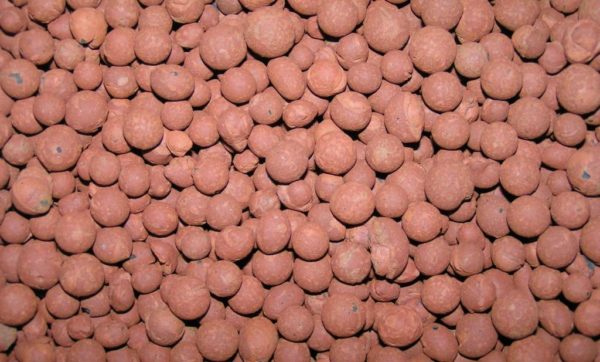
You can not stop your choice for floor insulation if the house is wooden and installed on screw piles. Because over time, the increased mass of the floor covering will necessarily lead to subsidence of the foundation, and the walls will crack.
Read more: Insulate the house with your own hands outside - selection of materials, standards and installation
Sawdust as insulation for the floor
Everyone knows that sawdust is a waste of woodworking production. Using sawdust as a floor insulation in a wooden house from the bottom of the floorboards, it will not work not to open the floor, see instructions, photos, video materials.
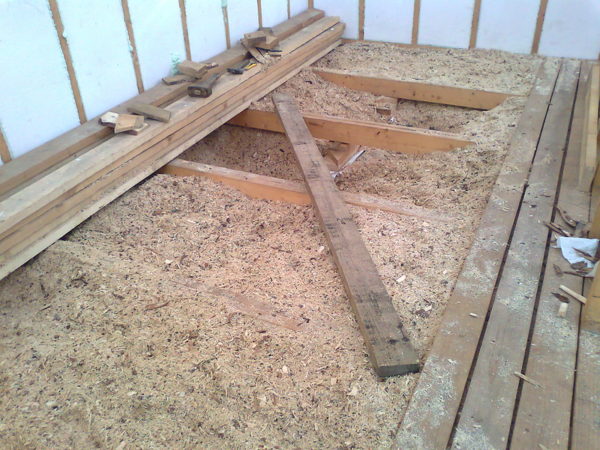
They have a huge mass of advantages, among which:
- steam and sound insulation;
- keep heat for a long time;
- environmentally friendly;
- low cost.
Before use, they are mixed with a special solution of water and cement. Thanks to such an additional component, they are excellent for floor insulation on the first floors of apartment buildings. The mixture also helps protect sawdust from rodents and parasites.
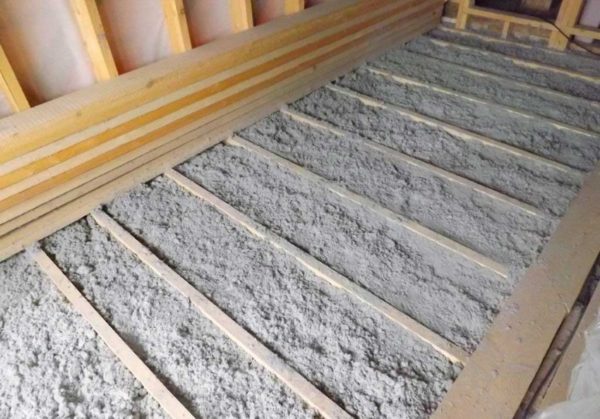
If using additional components, instead of cement mortar, use clay, and this is also an environmentally friendly material, thermal insulation will increase several times.
Sawdust is considered an ideal insulation material for floors in wooden houses that do not have a solid foundation.
Polyfoam as insulation material for the floor
Polyfoam is a fairly popular type of insulation, although more often it is used for cladding cold walls.
Benefits:
- excellent soundproofness;
- excellent thermal conductivity;
- easy to install;
- fire resistant;
- long term of operation.

But, despite a large number of advantages, polystyrene has a big drawback - it can absorb water. And this is an important minus of operation. But many homeowners use it because of the simple and inexpensive installation technology.
Do not dwell on polystyrene foam, as insulation material for floors, if:
- Your home is in flooded areas.
- The building site has nearby groundwater.
- If the choice has already been made, then good waterproofing should be installed.

Highlights of installation of insulation
Whatever material you choose for insulation, it will have its own special methods of fixing. There is also a general procedure for laying layers for proper insulation:
- waterproofing;
- heat protection;
- steam protection;
- the main insulation material you have chosen;
- flooring.

It is such a stacking order that can make and maintain the best thermal regime. With this installation technology, humidity will normally circulate in the house.
Read more: DIY ventilation in a private house - requirements, calculation and installation
Insulating the floor of the socle, it is advisable to choose beams with sections that are 50 to 100 mm. They are mounted from below, the voids between them are filled with an insulating layer. Next, the boards are stacked.
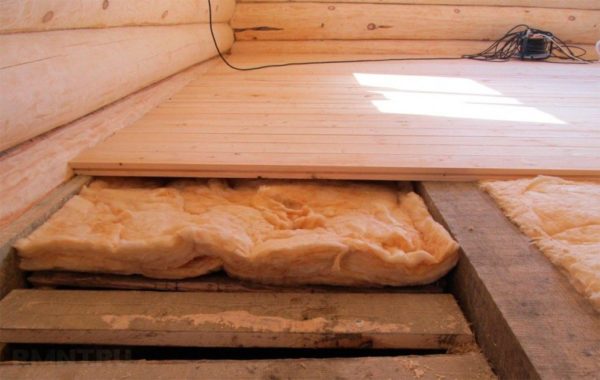
Waterproofing
In a private house, cold air currents usually gather on a warm surface, so condensation forms. For this reason, in a private house, waterproofing when insulating the floor must be. Otherwise, the formation of fungus and mold is inevitable.
Vapor barrier installation
When insulating the floor with polystyrene or foam, vapor barrier is required. The house will operate household appliances and equipment that produce heat, condensation will form when it collides with cold air.

Moisture will settle inside the structure, which will cause rotting and swelling of the wooden floor. Therefore, when you decide how to insulate the floor in a wooden house, think not to open the floor, and carry out installation from the bottom of the floorboards. Carefully read the instructions, photos and videos.
Usually this layer is laid first, for this it is easiest to use polyethylene. This is an excellent material for both steam and waterproofing.
Stage of insulation
Installation of the insulation layer on the logs is one of the best and most convenient options.Moreover, these same bars can be used for flooring.
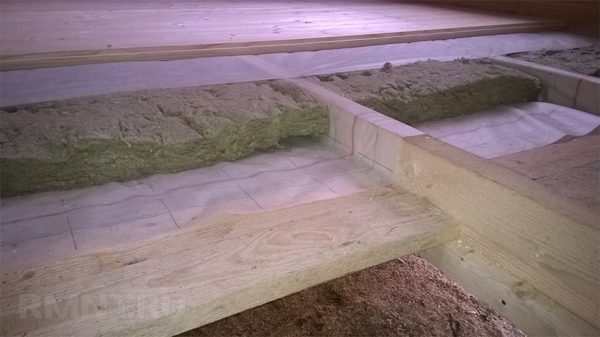
- At a distance of 1-1.5 meters, the bars are laid on the foundation.
- Further, plywood or chipboard sheets are mounted with self-tapping screws.
- Insulation is placed in the openings of the log, the thickness should not exceed the height of the bars themselves.
- Next, a waterproofing layer should be laid, this step can be skipped if the main insulation material is resistant to moisture.
- And finally, we lay the flooring.
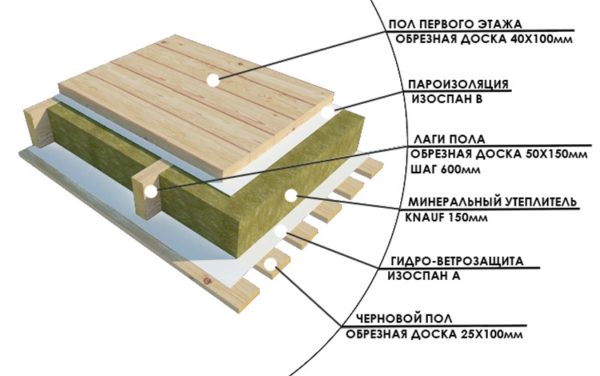
On the network today you can find a large number of variations of floor insulation, with attached instructions, photos, videos. After reviewing them, you will understand the entire installation process, how to choose a heater and how to mount it correctly.
In addition, such plot explanations contain many tips and comments on where you can get a lot of useful material. For example, how to properly fill and screed with expanded polystyrene. After reading the article, you will learn how to insulate the floor in a wooden house from the bottom of the floorboards and understand that without opening the floor, it is practically impossible to do this qualitatively.

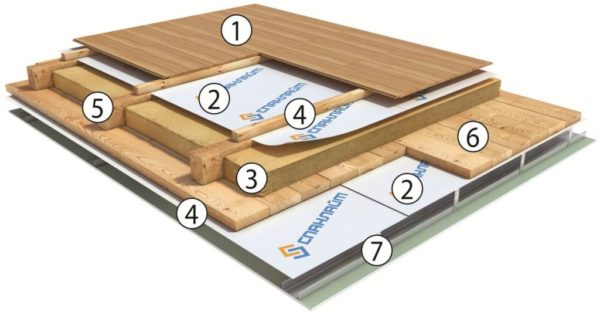



Andrew
quickie ... insulation from below is when the floor is opened from above ??? !!!
Anton
Polyfoam soundproof and fireproof ???????? Are you serious?
Boris
Hackwork ... when this polystyrene began to have good thermal conductivity ??? !!!